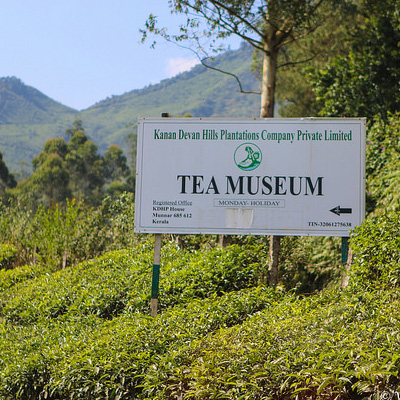
Tea Tasting
The beauty of the green pastures of sprawling tea gardens will steal your heart at the charming hill stations of Kerala. The favorable climate and fertile soil of these hilly regions are best suited for tea cultivation. India is the largest tea producer and tea exporter in the world.
Tea Tasting - Kerala
It was the British who had introduced the tea plantation and cultivation in Kerala during the colonial times. Munnar, Wayanad and Vagamon are the three places in Kerala famous for its picturesque tea plantations and are the popular tourist destinations in Kerala. Munnar is situated on the Kannan Devan Hills and has the highest tea estates in India. Wayanad is the second most important tea plantation area in Kerala, after Munnar.
Wayanad has very rightfully earned itself the name ‘Green Heaven of Malabar’ because of its lush green tea plantations. Vagamon is another charming hill station known for its beautiful tea gardens. Exploring these tea estates brings the nostalgia of the colonial era and you will get carried away by the fresh aroma of tea that will grab your nostrils.
India's first ever Tea Museum is situated on the Kannan Devan Hills of Munnar. It was established in the year 2005 and was set up at the Nallathanni Estate of Tata Tea. The main idea behind establishing this tea museum is to recount the growth of this more-than-a-century-old tea plantation district.
The Tea Museum gives a complete knowledge about the transition of Munnar from the rudimentary tea roller to the present day, fully automated tea factory at Matupetty. You can also watch the various steps of tea processing and the operations that go into the making of black tea.
Tea Tasting is the most interesting part of the Tea Museum. The most exotic varieties of tea that are available all around the world can be tasted from here. This place is highly recommended for tea lovers. Tea Tasting is quite a different experience. The ultra-fine differences of the tea variants will astound you beyond your imagination.
The pleasing aroma and the different flavors of tea will refresh your mind and make you energetic. There is a demonstration room for the tea tasting at the museum. The guides elaborately explain the various process that happens in the tea production. From post-plucking tea leaves to wilting and at last drying, we get a complete knowledge of tea making process.
Tea leaves are plucked out by hand from the tea plantations by groups of women. They pluck the first two leaves along with the bud from each shoot and put it in a basket which they carry behind their back. The second step is called wilting which is done to reduce the moisture content in the leaves and it also allows the flavor compounds to develop.
The freshly plucked tea leaves are placed in a series of troughs and are subjected to hot air forced from underneath the trough. The leaf looks limp and soft enough for rolling after wilting. Then the leaves are rolled, twisted and crushed in the process called bruising. Next process is called oxidation which involves the browning of the leaves. The leaf is next heated to stop oxidation and the process is called fixing.
The final step of tea processing is drying which enhances the flavor of tea and also ensures its long shelf-life. Finally, the product is ready to be packed and shipped all over the world. A lot of varieties of tea like Lemon tea, ginger tea, chocolate tea, vanilla tea are available here for you to taste. You can also buy tea leaves at half the price available at other places from here.